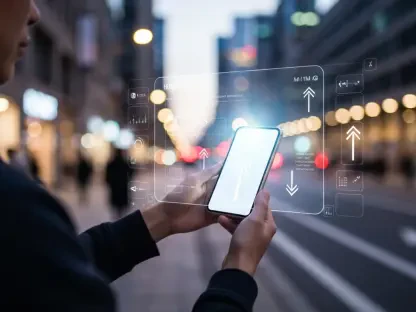In a bold move that is set to shake the smartphone industry, Samsung has unveiled its newest innovation, the Galaxy S25 Edge, ahead of Apple’s anticipated iPhone 17 Air launch. This strategic announcement not only positions Samsung as a frontrunner in the race for sleek and thin mobile devices but also sets the stage for intense competition within the premium smartphone market. With the Galaxy S25 Edge boasting a slim profile and advanced technical features, Samsung is making a clear statement. The device comes equipped with cutting-edge AI capabilities allowing real-time interaction through both vision and voice, setting a new standard for user experience. Priced at $1,099, it competes directly within the high-end segment, drawing attention from tech enthusiasts eager to experience its new offerings. This preemptive launch signifies Samsung’s commitment to innovation, aiming to capture consumer interest before Apple’s release and potentially alter the power balance in the smartphone arena.
Samsung’s Strategic Move
With a 6.7-inch screen and a body thickness of 5.8 millimeters, the Galaxy S25 Edge represents Samsung’s most refined endeavor into slimming down hardware while enhancing capabilities. Weighing slightly more than the basic Galaxy S25, this new model signifies a leap forward in design and function—key elements that could sway consumer preference. Analysts are keenly observing Samsung’s calculated strategy. By presenting the S25 Edge prior to Apple’s iPhone 17 Air, Samsung aims to tap into the growing market of consumers who prioritize thinner devices without compromising on performance and features. This move is not only tactical but potentially transformative within the smartphone sector, as it seeks to cement Samsung’s standing as a leader in innovation while simultaneously challenging Apple’s foothold. Industry experts believe this could trigger significant shifts in market shares, encouraging both companies to further refine and perfect future models to meet evolving consumer preferences.
Chips, Displays, and Beyond
Speculation surrounding Apple’s iPhone 17 Air suggests it could be the thinnest iPhone to date, with a thickness estimated between 5.5 and 6 millimeters. The phone is expected to feature a titanium-aluminum alloy frame, underlining Apple’s dedication to both aesthetics and durability. Among its noteworthy expected features is a horizontal single rear camera design, a USB-C port potentially placed off-center, and reliance on eSIM technology. Incorporating a 6.6-inch OLED display, it may harness ProMotion refresh rates and LTPO technology to deliver seamless scrolling alongside an always-on display. Driving performance, the A19 chip built on a 3nm process is anticipated, coupled with RAM variations between 8GB and 12GB. Despite these impressive specs, Apple’s pursuit of a more compact form may result in the exclusion of ultra-wide and telephoto lenses. This design choice could impact spatial video capabilities, presenting a trade-off that Apple users will have to weigh.
Addressing Battery Concerns
While Apple’s designs often push technical and aesthetic boundaries, challenges persist, particularly regarding battery life within such thin devices. This pursuit of slimness might limit battery capacity, leading to potential concerns over daily usage longevity; only 60 to 70 percent of users are expected to enjoy a full day’s charge. In response to this possible drawback, rumors suggest Apple might introduce a Smart Battery Case accessory as a solution for those needing extended battery life. Supplementary features could include MagSafe charging capabilities, a Camera Control button, and an Action button to enhance usability. Despite these innovations, another anticipated compromise arises from a single speaker setup, potentially impacting audio quality. These decisions illustrate how contemporary design trends can necessitate trade-offs between aesthetic appeal and functional practicality in devices.
The Battle for Consumer Attention
Amidst these developments, the smartphone industry reflects a highly competitive atmosphere where major players like Samsung and Apple continuously strive to outdo each other. With Samsung’s proactive approach in releasing the S25 Edge, it sets the tone for a race centered around sleekness and innovation. Both companies share a vision to introduce devices integrating advanced AI and pioneering technical features tailored to consumer desires. This ongoing duel underscores a demand for innovation and enhancement in personal technology. Samsung’s ambition to maximize global reach with its newest device demonstrates clear intent to dominate, while Apple’s iPhone 17 Air has garnered substantial interest, stirring curiosity and anticipation among consumers and experts alike. Each step taken by these giants showcases their determination to lead and redefine what is possible in mobile technology, making clear the industry’s relentless push toward more intelligent, sophisticated, and user-friendly devices.
Conclusion and Future Considerations
As the Galaxy S25 Edge enters the market, Samsung’s strategic timing and design choices seem poised to influence consumer decisions significantly. However, as Apple’s iPhone 17 Air awaits release, a continuous evolution in smartphone technologies is inevitable. Future considerations could see both companies further emphasizing the balance between device thickness and functional features, driving innovation that caters to varied consumer demands. Anticipation builds around whether Apple will opt to refine its user experience by addressing compromises for the next generation of iPhones, potentially paving the way for new standards in mobile device aesthetics and operations. As the industry moves forward, these developments signify ongoing adaptation and responses to emerging consumer preferences, fostering a dynamic environment where the biggest names are challenged to harmonize style and substance in their quest for market dominance.









